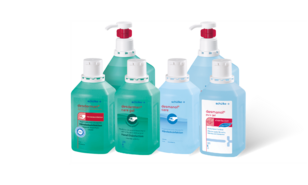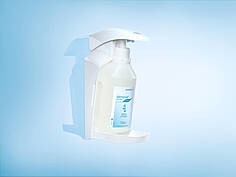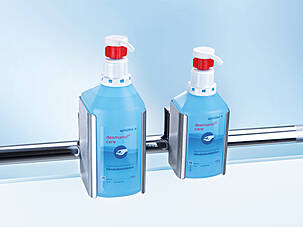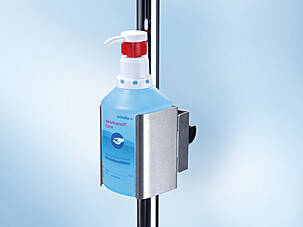World Hand Hygiene Day
On May 5, 2025, we join the global movement in recognizing World Hand Hygiene Day. This annual observance is a call to action for healthcare providers, institutions, and individuals to prioritize infection prevention through proper hand hygiene. The theme for this year is “It might be gloves, it’s always hand hygiene".
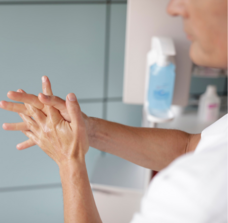
This highlights an essential message: while gloves are critical for protecting healthcare workers and patients, they cannot replace the fundamental practice of hand hygiene.
The World Health Organization (WHO) emphasizes that proper hand hygiene, when done at the right times and with the right technique, remains the most effective way to prevent the spread of infections, gloves included.
This World Hand Hygiene Day let’s recommit to making hand hygiene a priority in all healthcare settings.
Hand Hygiene: A Vital Practice, Even with Gloves
Optimal Hand Hygiene Remains Essential
Even with the use of gloves, optimal hand hygiene practices remain essential in healthcare environments. While gloves offer a physical barrier to infection, they do not eliminate the need for proper hand hygiene.
To effectively protect patients and staff alike, healthcare professionals must follow the World Health Organization's (WHO) 5 Moments for Hand Hygiene. This approach ensures that hand hygiene is performed at critical times to reduce the risk of cross-contamination and healthcare-associated infections (HAIs).
By following these protocols and using the right techniques, we create a safer, more hygienic healthcare environment for everyone.

The WHO 5 Moments for Hand Hygiene
The WHO 5 Moments for Hand Hygiene are a set of guidelines that outline the key moments when hand hygiene must be performed to ensure patient safety:
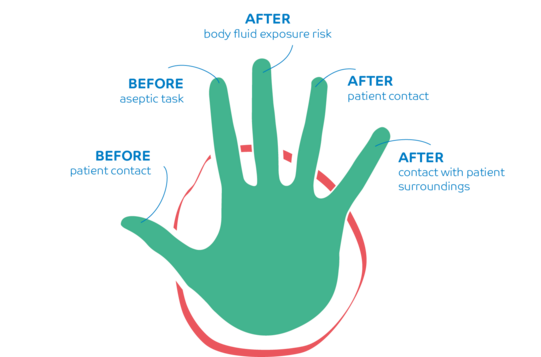
The point of care plays a particularly important role in the health sector!
Three main components combined make this place highly infection-critica: patient, medical staff and treatment!
The uncomplicated availability of hand disinfectants is crucial. Adding to decisive key factors for successful hand disinfection are the use of the disinfectant at the right moments while using the right technique.
schülke offers a complete and compatible range of products: from effective and gentle hand disinfection and cleaning to skin protection and care. Efficacy of the individual products – also in combined use – has been confirmed in numerous studies and meets national and international requirements. To make you feel safe every day.
Hand disinfection
schülke hand disinfectants of the brands desderman® and desmanol® are equally popular among professional users. The reasons for this are obvious in the truest sense of the word: Their broad efficacy and excellent skin tolerance ensure this – demonstrated both in various studies and by millions of uses in the health care sector. Our products are particularly suitable for high-frequency daily use – for the duration of the entire work life.
Hand protection
Our skin protection for the hands includes a whole range of specific measures to keep the skin healthy. schülke sensiva® skin protection lotion and cream are therefore designed to protect the skin from irritation. They are used on the hands before starting work, before activities that are stressful to the skin and after washing hands. Compatibility of skin protection products with other hand hygiene products is therefore particularly important. This is exactly what you can rely on when using schülke products, which have been thought through in the finest detail.
Hand care
Skin care is a component of skin protection. sensiva® skin care products are used when needed, after activities stressful to the skin and after work – they help regenerating the skin. Here, too, we guarantee compatibility with schülke hand disinfectants. At the same time, the disinfectant action is not limited, but – on the contrary – remains highly effective.
Washlotion
Cleaning the hands before starting work and when visibly dirty removes dirt and micro-organisms. Our sensiva® wash lotion with skin-friendly surfactant cleans hands gently and thoroughly.
Everything within reach at the point of care
At schülke, we support hand hygiene compliance not only through the broad efficacy and excellent skin compatibility of our hand disinfectants, but also through their process-oriented placement, for example, with the hyclick® system in the direct patient environment. Read more about this atwww.hyclick.com
Source:
1 National Center for Preparedness, Detection, and Control of Infectious Diseases (NCPDCID) and National Center for Zoonotic, Vector-Borne, and Enteric Diseases (NCZVED), http://www.cdc.gov/CDCTV/HandsTogether/





















